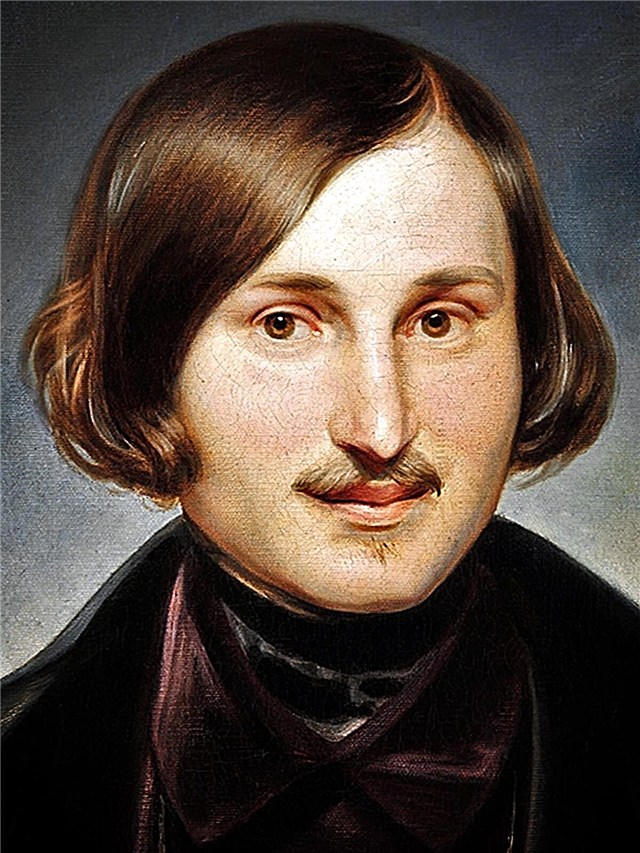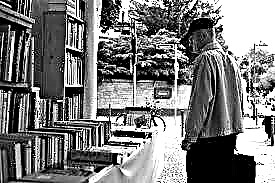: On the express find a man killed by a dozen stab blows. The famous detective finds out that, wanting to avenge the death of a little girl, all the passengers of the train participated in the murder.
Part one. Facts
From the Syrian city of Aleppo, express trains leave for Istanbul. Detective Hercule Poirot is one of the passengers on the express train. In addition to him, Colonel Arbatnot, traveling from India to England, and the young Englishwoman from Baghdad, Miss Mary Debenham, who works there as a governess, travel in a carriage. Friendship is established between the colonel and the girl during the trip. Suddenly, the express stops due to a trifle breakdown. It is quickly eliminated, but the express loses time. Miss Mary is very worried: if she does not arrive on time, then she will be late for the Orient Express, and she really needs to get on it.
In Istanbul, Poirot stops at a hotel. There, he sees an elderly American, Mr. Ratchett, who is accompanied by a secretary, Mr. McQueen. Suddenly, Poirot receives a telegram saying that he urgently needs to leave for London. He decides to use the Orient Express, but despite the winter dead season, all the seats are taken. Suddenly it turns out that one of the passengers did not show up, and the detective was given the vacant seat in the Istanbul-Kale wagon. Poirot’s neighbor is Mr McQueen. The train leaves for a three-day trip across Europe.
The famous detective is studying fellow travelers in his car. There are thirteen people: Italian Antonio Foscarelli, American Mr. Hardard, Russian Princess Dragomirova, elderly American Mrs. Hubbard, who is talking about her daughter and grandchildren all the time, middle-aged Swedish Greta Olson, German maid of Princess Hildegard Schmidt, Count and Countess of Andrena from Hungary . Poirot also sees among his fellow travelers Colonel Arbatnot, Mary Debenham and Mr. Ratchett with Secretary McQueen and a servant Masterman. It seems strange to the detective that people of different classes and nationalities gathered in one place.
Express arrives in Belgrade. A new carriage is added there, and Poirot occupies the vacated compartment. After two days of traveling, at night, a terrible scream is heard. Poirot looks at the watch and sees that it shows at twenty minutes. He looks out into the corridor and notices a conductor knocking in a nearby compartment, which Ratchett occupies. Someone answers in French and the conductor goes to another compartment, because there a light came on.
Poirot cannot fall asleep for a long time. He hears someone calling the guide, then Mrs. Hubbard's voice comes to him. The conductor Poirot summoned complains that the American got on as if she had a man in the compartment. Suddenly, the detective thinks that something heavy knocked on the door. Poirot peers out into the corridor and sees a conductor sitting in his place and a woman in a red kimono embroidered with dragons.
In the morning it turns out that the train stopped. They fell into a strip of drifts, and now it is not known when the journey will continue. At noon, Poirot was called in the compartment of the train chief. Need help from the famous detective - Mr. Ratchett was found stabbed to death in the compartment. Seeing that the passenger does not go out and does not respond to a knock, the conductor decided to open the door with his key, but it was locked from the inside and locked to the chain. Entering the compartment, he saw that the window was open, and the passenger was killed by a dozen stab blows. After examining the corpse, the doctor concluded that the blows were not done by a professional. Some were done with the left hand, others with the right, some were done when Mr. Ratchett was already dead. Due to heavy snow, no one could leave the car, therefore the killer is on the train.
Poirot speaks with the Secretary, Mr. McQueen. The young man worked for the victim for about a year. He cannot give any information about his master, only that recently someone sent him letters with threats.
Together with the doctor, the detective inspects the compartment. No one could leave him through the window. The murdered man lies on his back, with a gun under his pillow. After examining a glass of water, and finding sleeping pills in it, they conclude that the victim was euthanized. In the ashtray are burnt matches of various shapes and a charred piece of paper. In the corner of the compartment is a piece of a cambric with the letter “H”. A twisted clock on the chest of the slain shows half past one. The attention of the detective is attracted by charred paper, on which you can read: "..my little Daisy Armstrong." Now, Poirot understands who was actually killed.
English Colonel Armstrong married the daughter of the famous American actress Linda Arden, and they had a girl, Daisy. When the girl was three years old, she was abducted with a huge ransom demand. When his parents paid him, it turned out that the girl was already dead. Being pregnant, Mrs. Armstrong gave birth to a dead baby from shock and died in childbirth. The colonel shot himself in grief. The nanny Daisy, a Frenchwoman, was accused of kidnapping. The girl denied everything and committed suicide in despair. Then it turned out that she was innocent. The kidnapper and killer of the girl, a certain Cassetti, escaped retribution and lived under the name Ratchett.
The famous detective studies the facts.
Part two. Witness statements
Poirot interrogates witnesses.
Conductor Pierre Michel. The conductor has been serving for many years, he has an impeccable reputation. He knocked on Ratchett’s door, they answered him, then he went to another compartment, then went out into another car. Returning, the guide went to Mrs. Hubbard, who claimed that there was a man in her compartment, then looked at Poirot. The rest of the time, he sat in his place and saw a woman in a red kimono, embroidered with dragons, who walked down the corridor at night.
Secretary Hector McQueen. The young man did not know that his master was the killer Daisy Armstrong. Hector's father was the prosecutor who led the process and he would rather have cut off his right hand than work with the killer. Ratchett, the young man mainly served as a translator, since he did not speak foreign languages.
After dinner, Hector looked at his master, then until two in the morning he talked with Colonel Arbatnot. At night, the secretary saw both the guide and the woman in the red kimono. McQueen is surprised that the note is not completely destroyed, although Poirot did not mention it
Servant Masterman. The masterman put Ratchett's clothes in order, prepared sleeping pills for him at night and left in his compartment, where he stayed all night. He did not know anything about the fact that his master was the kidnapper of the girl.
Mrs. Hubbard. Mrs. Hubbard went to bed and felt that there was a man in her compartment. She called the guide, but he found no one in the compartment. He closed the door to Ratchett’s adjoining compartment, but did not approach the window, but in the morning she found a button from his jacket near the window.
The door in the next compartment, according to the lady, was locked. In the evening, Greta Olson went to see Mrs. Hubbard for the aspirin, before confusing the ladies compartment with Ratchett's compartment. The purse in which the aspirin was lying hung on the door and obscured the deadbolt. Taking the medicine, Olson checked the deadbolt and said that it was locked. From Ratchett's compartment, only snoring came to Mrs. Hubbard. Of course, she knew about Daisy’s murder, but she was not familiar with any of the Armstrong family. When asked by Poirot about the red kimono, Mrs. Hubbard replies that she does not have such clothes. During the conversation, the American constantly recalls her daughter and grandchildren.
Greta Olson. Since the Swede speaks French, Poirot speaks French to her. She accidentally opened the door to Ratchett's compartment, then went to Mrs. Hubbard for aspirin, checked to see if the deadbolt was locked, and returned to her compartment. She does not know anything about the abduction and murder of Daisy.
Princess Dragomirova. The princess did not leave her compartment all night. About an hour the maid came, gave her a massage and left. She knew the Armstrong family - Linda Arden was her close friend. The actress had another daughter, but the princess does not know anything about her. Dragomirova has no red kimono.
Count and Countess Andreni. The count slept at night and did not hear anything; he did not know the Armstrong family. In the count's passport on the name of his wife - Elena Goldenberg - there was a greasy spot, obviously, a trace from the finger of a sloppy official.
The countess also did not hear anything about the incident, as she took sleeping pills at night and slept. She also does not have a red kimono.
Colonel Arbatnot. The Colonel confirms that he spoke with McQueen. He did not know the Armstrong family.
Mr. Hardman. Mr. Hardman said that he works as a salesman, travels from Istanbul to Paris for the affairs of the company and does not know anything about what happened. But it soon turns out that he is a private investigator whom Ratchett hired. The victim was afraid of a short dark-haired man with a squeaky voice. Hardman did not know who his client really was.
Mr. Antonio Foscarelli. Foscarelli does not know anything about the incident, his neighbor Masterman did not leave the compartment, and Antonio is not familiar with the Armstrong family.
Miss Mary Debenham. Mary goes to London from Baghdad, where she served as a governess. Waking up at five in the morning, she looked out into the corridor and saw a figure in a red kimono. Who this could be, she does not know.
Hildegard Schmidt. The maid was with the princess, then returned to her compartment and knows nothing about the murder, nor about the red coat. Leaving her mistress, she saw a guide, a short dark-haired man with a squeaky voice.
After listening to passengers, Poirot sums up. Apparently, the crime was committed at a quarter past one, as shown by the hours of the murdered, but then the killer could not leave the train. Also, two mysterious characters arose: a guide who was not in the state, and a woman in a red kimono, which none of the passengers had.
Mrs. Hubbard suddenly runs in, finding a huge bloody knife in her purse. Poirot examines her compartment. He restores the picture of last night. The door in the next compartment was closed, the deadbolt was hidden under the purse. Olson could push the door and decide that it was closed by a deadbolt, although the deadbolt was raised and the door was closed on the other side. Opening the door, the assassin entered Mrs. Hubbard’s compartment.
Poirot examines the luggage of passengers. His attention is drawn to the fresh sticker on Countess Andreni's suitcase. In the baggage of the maid Schmidt, the detective finds the form of a conductor. The German says that this thing does not belong to her. Trying to calm a woman, Poirot says that he believes her. There were no buttons on the form, and in the pocket there was a universal key for all express coupes. A stranger, dressed in the shape of a conductor, could open the door in Mrs. Hubbard’s compartment with that key.
Poirot finds a red kimono in his suitcase. The famous detective takes the challenge.
Part three. Poirot takes a seat and ponders
First of all, the famous detective draws attention to the fact that the victim did not speak foreign languages, and the guide was answered in French. Consequently, at night in the Ratchett’s compartment was a man who spoke French. All passengers have a solid alibi and no motive to commit murder. But the famous detective Hercule Poirot notices even the little things. Why does Countess Andreni's passport have a fresh grease stain and a fresh sticker on her suitcase? Yes, because her name is not Elena, but Helena and she wants to hide it.
The killer planned to get into the train, disguised as a conductor, commit the murder and get off at the station. The corpse should have been found only in the morning, when it was already far away, but the plan of the killer was disrupted by a snow drift. Waiting in the compartment of the killed train departure, he decides to burn the note, but is mistaken for the second time and does not completely burn it. The paper should have been destroyed due to the presence on the express train of a person so close to the Armstrong family that suspicion immediately fell on him.
Another evidence is a scarf with the letter “H”. Judging by the expensive fabric, the scarf can belong only to Princess Dragomirova, whose name is Natalya, or Countess Andreni. Mrs. Armstrong's mother's surname was Goldenberg, just like the maiden name of Countess Andreni, therefore, the countess is Mrs. Armstrong's younger sister. The countess confirms the conclusions of Poirot, but denies her involvement in the murder. In a conversation, she mentions a governess who was in her childhood. She does not remember her name, but Poirot realizes that this is Mary Debenham. She admits his innocence, and the princess recognizes her handkerchief. But could she kill?
Foscarelli admits Poirot that he worked as a driver for the Armstrong, Greta Olson was the nanny of baby Daisy, Masterman served as an orderly for Colonel Armstrong.
Poirot collects passengers in a restaurant car and offers two versions of the murder. According to the doctor, death occurred between twelve and two o'clock. At half past four, drifts began, and it was impossible to leave the train, all the more so since Mr. Hardman, who was occupying the last compartment, claimed that no one was leaving. Consequently, the killer is in the car. But there is another version: a killer in the form of a conductor got into the carriage, went into Ratchett’s compartment, killed him, penetrated Mrs. Hubbard through an unlocked door, thrust a knife into her purse, threw a uniform into the first compartment and got off the train in front of him departure. But what about the clock, which showed half past one? The fact is that the train crossed the time zone, but Ratchett forgot to turn the arrows, which means that the murder happened an hour earlier - at half past twelve.
Surprised by such a colorful company, gathered in one train during the dead season, Poirot decides to find out what each passenger has to do with the Armstrong family. He analyzes their testimony. McQueen was surprised that the note was not burned, therefore, he knew about it, so he is the murderer or his accomplice. Masterman says that he gave the owner sleeping pills for the night. But the man who hides the weapon under his pillow is clearly about to stay awake. Hardman was about to guard Ratchett, so why didn't he spend the night in his compartment? Mrs. Hubbard asked Greta Olson to see if the deadbolt, which is located so that the handbag can not block it, is closed.
The testimonies of these people reinforce each other. The famous detective concludes: everyone is involved in the crime, including the guide. When the drift intervened in their plans, they came up with a story with a guide and a woman in a red kimono. Instead of Countess Andreni, a close relative of the Armstrong family, her husband participated in the murder. Conductor Pierre Michelle was the father of an unfortunate girl who committed suicide, Hartman - her fiance, and Colonel Arbatnot - a friend of the family. Schmidt worked as a maid in the Armstrongs house, and Mrs. Hubbard was the mother of Mrs. Armstrong and Elena Andreni, the famous tragic actress Linda Arden. They all loved baby Daisy, and everyone was shocked by her terrible death. Having agreed, they sentenced Cassetti to death, and each of them stabbed him, because all the blows were different.
Guess the famous detective and of mutual love between Mary Debenham and Colonel Arbatnot.
Having solved this puzzle, the famous detective bows back, proposing to leave the police version with the killer in the form of a guide.




 Wow! Projects
Wow! Projects






